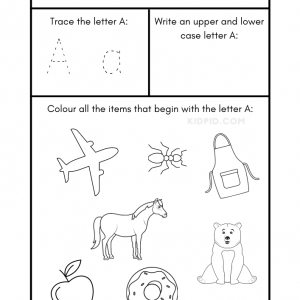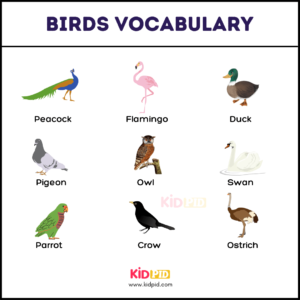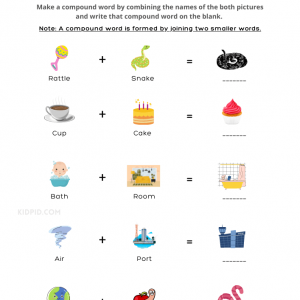
Kunal
MemberForum Replies Created
-
::
To determine the product of sec y and cos y, we can use the trigonometric identity:
sec y = 1 / cos y
Let’s substitute this into the expression and simplify:
(sec y) * (cos y) = (1 / cos y) * (cos y) = 1
Therefore, the product of sec y and cos y is equal to 1.
The correct answer is b) 1.
-
::
In grammar, tense refers to the form of a verb that indicates the time at which an action or event takes place. It helps to establish the timeline of events in a sentence or a passage. Tense is an important aspect of language as it allows us to express actions or states in the past, present, or future.
English has several tenses, including present tense, past tense, and future tense. Each tense has different forms and is used to convey different temporal relationships between the action or state and the time of speaking or writing.
For example:
Present tense: “She sings beautifully.”
Past tense: “They played soccer yesterday.”
Future tense: “We will go to the beach tomorrow.”
The choice of tense depends on the context, the time of the action or event, and the intended meaning of the sentence. Tense helps us to accurately communicate when an action occurred or will occur in relation to the present or other points in time.
-
::
Yes, nitrogen is necessary for life. It is an essential element for the structure and functioning of living organisms. Nitrogen is a key component of amino acids, which are the building blocks of proteins. Proteins are crucial for various biological processes, including growth, repair, and maintenance of tissues, as well as the production of enzymes, hormones, and antibodies.
In addition to proteins, nitrogen is also a vital component of nucleic acids, such as DNA and RNA, which carry genetic information and play a fundamental role in heredity and the synthesis of proteins.
While nitrogen gas (N2) makes up about 78% of Earth’s atmosphere, it is not directly usable by most organisms. They require nitrogen in more accessible forms, such as ammonium (NH4+), nitrate (NO3-), or organic nitrogen compounds. The process of converting nitrogen gas into these usable forms is called nitrogen fixation and is primarily carried out by certain bacteria, either in the soil or within the root nodules of leguminous plants.
In summary, nitrogen is essential for the structure and functioning of living organisms, playing a crucial role in the formation of proteins and nucleic acids.
-
::
The DNA molecule plays a fundamental role in genetics as it serves as the primary repository of genetic information in living organisms. It carries the instructions necessary for the development, functioning, and reproduction of all known life forms.
DNA, or deoxyribonucleic acid, is a double-stranded molecule composed of nucleotides. Each nucleotide consists of three components: a sugar molecule (deoxyribose), a phosphate group, and one of four nitrogenous bases—adenine (A), thymine (T), cytosine (C), or guanine (G). The two DNA strands are held together by hydrogen bonds between complementary base pairs: A with T and C with G.
The storage and transmission of genetic information occur through several processes:
Replication: Before a cell divides, its DNA needs to be replicated. The double helix of DNA unwinds, and each strand serves as a template for the synthesis of a new complementary strand. This process results in two identical DNA molecules, each containing one original and one newly synthesized strand.
Transcription: The genetic information stored in DNA is used to produce RNA molecules in a process called transcription. During transcription, one DNA strand serves as a template for the synthesis of a complementary RNA molecule, with the nucleotide uracil (U) replacing thymine (T) in RNA. The RNA molecule, known as messenger RNA (mRNA), carries the genetic instructions from DNA to the protein synthesis machinery.
Translation: Translation is the process by which the genetic code carried by mRNA is converted into proteins. The mRNA molecule interacts with a cellular structure called a ribosome, which reads the sequence of nucleotides in groups of three, known as codons. Each codon corresponds to a specific amino acid, which is the building block of proteins. As the ribosome reads the mRNA sequence, it assembles the amino acids in the correct order, ultimately producing a functional protein.
Through these processes, the DNA molecule stores the genetic information necessary for the development and functioning of an organism. The sequence of nucleotides in the DNA molecule determines the sequence of amino acids in proteins, which in turn influences the structure and function of cells and organisms. Genetic information is passed on from one generation to the next through the transmission of DNA from parent to offspring during reproduction.
-
::
We have different seasons because of the tilt of the Earth’s axis and its orbit around the Sun. The Earth’s axis is tilted at an angle of about 23.5 degrees relative to its orbital plane. This means that as the Earth orbits the Sun, different parts of the planet receive varying amounts of sunlight throughout the year, leading to the changing seasons.
During the summer season in the Northern Hemisphere (e.g., June, July, and August), the North Pole is tilted towards the Sun. This results in the Sun’s rays hitting the Northern Hemisphere more directly, causing the days to be longer and the sunlight to be more concentrated. This leads to warmer temperatures and is why it is summer during this time.
On the other hand, during the winter season in the Northern Hemisphere (e.g., December, January, and February), the North Pole is tilted away from the Sun. This means that the Sun’s rays hit the Northern Hemisphere at a more oblique angle, leading to shorter days and less concentrated sunlight. As a result, temperatures are colder, and it is winter.
The opposite is true for the Southern Hemisphere. When it is summer in the Northern Hemisphere, it is winter in the Southern Hemisphere because the South Pole is tilted away from the Sun. Likewise, when it is winter in the Northern Hemisphere, it is summer in the Southern Hemisphere because the South Pole is tilted towards the Sun.
During the transition periods between seasons (spring and autumn or fall), the Earth is positioned in a way that the tilt is neither towards nor away from the Sun. This results in more balanced daylight hours and moderate temperatures.
So, the changing seasons occur because of the Earth’s axial tilt and its orbit around the Sun, which causes variations in the amount and intensity of sunlight received throughout the year in different parts of the world.
-
::
The weight of the Earth is a measure of the total gravitational force exerted on the Earth by all of the matter it contains. The weight of an object can vary depending on the location and the reference frame from which it is measured.
The mass of the Earth is approximately 5.97 x 10^24 kilograms (kg). However, weight is a measure of the force exerted on an object due to gravity, and it depends on the mass of the object and the strength of the gravitational field. On the surface of the Earth, the average acceleration due to gravity is about 9.8 meters per second squared (m/s^2).
Using the formula weight = mass × acceleration due to gravity, we can calculate the weight of the Earth. The weight of the Earth is roughly 5.97 x 10^24 kg × 9.8 m/s^2, which gives us a weight of approximately 5.87 x 10^25 newtons (N).
-
Kunal
MemberJanuary 9, 2024 at 5:46 pm in reply to: What was the very first discovery in the field of medical science? How was it di::The field of medical science has a long history, and it is difficult to pinpoint a single “first” discovery. However, one of the earliest and most significant medical discoveries was the concept of the Hippocratic Oath and the establishment of the Hippocratic School of Medicine in ancient Greece.
The Hippocratic School, founded by Hippocrates around the 5th century BCE, revolutionized the practice of medicine by shifting the focus from supernatural and religious explanations of disease to a more rational and systematic approach. The Hippocratic physicians rejected the prevailing belief in divine punishment as the cause of illness and instead sought natural explanations for diseases.
Hippocrates and his followers made several important observations and contributions to medical science. They emphasized the importance of clinical observation and detailed documentation of symptoms and disease progression. They also recognized the significance of environmental factors, diet, and lifestyle in influencing health. The Hippocratic School laid the foundation for evidence-based medicine and established a code of ethics for physicians through the Hippocratic Oath.
While the Hippocratic School marked a significant advancement in medical science, it is important to note that medical knowledge and practices have evolved over thousands of years through the contributions of many cultures and civilizations. Numerous other discoveries and advancements have since been made, leading to our current understanding of medicine.
-
::
Birds fly through a combination of anatomical adaptations, physiological mechanisms, and aerodynamic principles. Here’s a simplified explanation of how birds are able to fly:
1. Wings: Birds have wings, which are specialized forelimbs modified for flight. The wings are lightweight and have a unique shape that allows for efficient airfoil formation. The primary feathers at the end of the wing provide most of the lift during flight.
2. Lift: Lift is the upward force that counters the weight of the bird, allowing it to stay airborne. As a bird flaps its wings, the curved shape of the wings and the angle at which they meet the air generate lift. This lift is created due to a combination of Bernoulli’s principle (which relates the speed of airflow and pressure) and Newton’s third law of motion (which states that for every action, there is an equal and opposite reaction).
3. Thrust: Thrust is the forward force that propels the bird through the air. The bird generates thrust by flapping its wings in a downward and backward motion. The downward stroke provides the main thrust, while the backward motion reduces air resistance during the upstroke.
4. Drag: Drag is the resistance encountered by the bird as it moves through the air. Birds minimize drag by streamlining their bodies and wings, reducing turbulence and friction. Feathers also play a role in reducing drag by providing a smooth surface.
5. Steering and Stability: Birds control their flight by adjusting the position and shape of their wings. They can alter the angle of attack (the angle between the wing and the oncoming air) to change the amount of lift and control their altitude. Birds also use their tail feathers to steer and maintain stability during flight.
6. Muscles and Energy: Birds have powerful flight muscles attached to their wings, allowing them to generate the necessary force for flapping. Birds require a high metabolic rate to sustain the energy demands of flying, and they have adaptations such as efficient respiratory and circulatory systems to support their active flight.
It’s important to note that this is a simplified explanation, and bird flight is a complex topic with many intricacies. Different bird species have unique adaptations and flight styles, and there are additional factors involved in avian flight, such as wind patterns and thermals, that can influence a bird’s flight capabilities.
-
Kunal
MemberJanuary 10, 2024 at 6:06 pm in reply to: What is Reflection? State the Laws of reflection.::Reflection is the phenomenon of light or any other wave encountering a boundary between two media and bouncing back into the medium from which it originated. It occurs when a wavefront encounters a surface or boundary that does not absorb the wave’s energy and is not able to transmit it. Instead, the wave is reflected back into the original medium.
The laws of reflection describe the behavior of light when it reflects off a surface. These laws are as follows:
The incident ray, the reflected ray, and the normal to the surface at the point of incidence all lie in the same plane.
The angle of incidence (θi) is equal to the angle of reflection (θr), where both angles are measured between the incident ray or reflected ray and the normal to the surface.
These laws are applicable to any type of wave, not just light waves. When light reflects off a smooth and polished surface, such as a mirror, the angle of incidence is equal to the angle of reflection, and the reflected image appears to be behind the mirror at the same distance as the object in front of it.
It’s worth noting that these laws apply to idealized situations, assuming the surface is perfectly smooth and the medium is homogeneous. In reality, surfaces may have imperfections and different materials can have varying degrees of reflectivity.
-
::
Newton’s second law of motion states that the acceleration of an object is directly proportional to the net force acting on it and inversely proportional to its mass. Mathematically, it can be expressed as:
F = m * a
where:
F represents the net force acting on the object,
m is the mass of the object, and
a is the acceleration produced.
According to Newton’s second law, if you apply a force to an object, the object will accelerate in the direction of the force. The acceleration is directly proportional to the force and inversely proportional to the mass of the object. This means that the same force will produce a greater acceleration on a lighter object compared to a heavier object.
The second law is one of the fundamental principles of classical mechanics and provides a mathematical description of the cause-and-effect relationship between force, mass, and acceleration. It is commonly written as “F = ma” and is applicable to a wide range of physical systems, from everyday objects to celestial bodies.
-
::
The first martyr of the Revolt of 1857, also known as the Indian Rebellion of 1857 or the First War of Independence, is a subject of debate and there is no definitive answer. The uprising was a significant event in Indian history, characterized by widespread rebellion against British rule in various parts of India.
Several individuals are often mentioned as potential candidates for the first martyr, but it is important to note that the revolt occurred in multiple regions simultaneously, and acts of resistance and sacrifice were taking place across the country. Some notable figures associated with the early stages of the revolt include Mangal Pandey, who played a pivotal role in the Barrackpore incident in March 1857, and Rani Lakshmibai of Jhansi, who became a prominent leader in the uprising.
However, it is challenging to identify a single individual as the definitive first martyr of the revolt due to the decentralized and spontaneous nature of the rebellion. The uprising involved numerous acts of resistance, and many individuals lost their lives fighting against British rule during the course of the events.
-
::
Literature continues to play a significant role in today’s society, despite the changing landscape of media and technology. Here are some key roles that literature fulfills:
Entertainment and escapism: Literature provides a source of entertainment and escapism, allowing readers to immerse themselves in captivating stories, explore different worlds, and experience a wide range of emotions. It offers a break from the pressures of daily life and serves as a form of relaxation and enjoyment.
Education and knowledge: Literature contributes to education and knowledge by presenting a wide array of subjects, themes, and perspectives. It can provide historical insights, cultural understanding, and social commentary. Through literature, readers can learn about different societies, eras, and human experiences, fostering empathy and broadening their understanding of the world.
Reflection and introspection: Literature often deals with complex human experiences, emotions, and moral dilemmas. It prompts readers to reflect on their own lives, beliefs, and values. By engaging with diverse characters and their journeys, literature encourages introspection and personal growth, helping individuals develop a deeper understanding of themselves and others.
Social commentary and critique: Literature has long been a platform for social commentary and critique. It can shed light on social, political, and cultural issues, challenging established norms and sparking conversations. By presenting alternative perspectives and exploring controversial topics, literature encourages critical thinking and stimulates dialogue within society.
Preservation of culture and heritage: Literature plays a vital role in preserving and transmitting cultural heritage. It captures the stories, traditions, and beliefs of different communities, ensuring they are passed down through generations. Literary works serve as a reflection of a society’s values, history, and identity, helping to maintain cultural continuity.
Emotional and psychological catharsis: Literature provides a means of emotional and psychological catharsis for both authors and readers. It allows them to explore and express complex emotions, confront personal struggles, and find solace in shared experiences. Literature can be therapeutic, offering comfort and validation to individuals facing similar challenges.
Artistic expression and creativity: Literature is an art form that allows authors to express their creativity, imagination, and unique perspectives. It encompasses various genres, styles, and literary techniques, showcasing the power of language and storytelling. Literature inspires and influences other artistic mediums, such as film, theater, and music, contributing to the richness of human creativity.
Overall, literature remains a vital part of today’s society, serving as a source of entertainment, knowledge, reflection, and cultural preservation. It continues to shape and influence individuals and communities, fostering empathy, critical thinking, and personal growth.
-
::
The study of mushrooms is called mycology. Mycology is a branch of biology that focuses on the scientific study of fungi, including mushrooms, molds, yeasts, and other related organisms. Mycologists study various aspects of fungi, including their taxonomy, morphology, physiology, ecology, and genetics. They investigate the diversity, distribution, and ecological roles of mushrooms, as well as their interactions with other organisms and their importance in various ecosystems. Mycology also encompasses the study of the medical, agricultural, and industrial applications of fungi.
-
::
Symbolism is a powerful tool that artists can use to convey meaning and evoke emotions in their artwork. Here are some ways in which symbolism can be used in art:
Representing abstract concepts: Symbols can be used to represent ideas or concepts that are difficult to depict directly. For example, a dove is often used as a symbol of peace or freedom, while a skull can represent mortality or the fragility of life.
Conveying emotions: Symbols can evoke specific emotions or moods in the viewer. For instance, dark storm clouds might symbolize sadness or foreboding, while vibrant colors may symbolize joy or energy.
Adding depth and layers of meaning: Symbols can add depth and complexity to an artwork by conveying multiple layers of meaning. They can be used to suggest hidden or symbolic narratives that encourage the viewer to interpret the artwork in different ways.
Cultural and historical references: Symbols can be used to reference specific cultural or historical contexts. For example, the use of a national flag can represent patriotism or national identity, while religious symbols can convey spiritual or theological ideas.
Personal expression: Artists often use symbols as a means of personal expression. They may create their own symbols or use ones that hold personal significance to them, allowing them to communicate their unique perspective or experiences.
Creating visual metaphors: Symbols can function as visual metaphors, representing one thing while suggesting another. This can create visual interest and encourage the viewer to think critically about the artwork.
Enhancing storytelling: Symbols can be employed to enhance storytelling in art. They can serve as narrative devices, helping to advance a story, reveal character traits, or foreshadow events.
When using symbolism in art, it’s important to consider the context and potential interpretations of the symbols. Different symbols can have varied meanings across cultures and individuals, so artists should be mindful of how their chosen symbols may be understood by their intended audience.
-
::
Flies are capable of walking on ceilings and other surfaces due to their unique anatomy and specialized adaptations.
One key feature that allows flies to walk on ceilings is the structure of their feet. Flies have specialized adhesive pads on their feet called pulvilli. These pads are covered in tiny hair-like structures called setae, which are tipped with sticky secretions. The adhesive properties of these pads help flies cling to various surfaces, including ceilings.
When a fly lands on a ceiling, it presses its feet against the surface, allowing the adhesive pads to make contact. The setae and sticky secretions create molecular forces called van der Waals forces, which are responsible for the attraction between the fly’s feet and the ceiling. These forces are relatively weak individually but become significant when combined over the large surface area of the fly’s feet.
In addition to their adhesive pads, flies also use claws on their feet to provide additional grip. These claws can hook onto tiny irregularities in the surface, enhancing the fly’s ability to walk on ceilings and other challenging terrains.
The coordination and control of leg movements also play a role in a fly’s ability to walk on ceilings. Flies have specialized sensory organs called proprioceptors in their legs. These organs provide feedback about the position and movement of the legs, allowing the fly to adjust its steps and maintain stability while walking on different surfaces.
Overall, the combination of adhesive pads, claws, and precise leg movements enables flies to walk on ceilings and other challenging surfaces with relative ease.
 Syllable Division Rules Flashcards
Syllable Division Rules Flashcards  A-Z Letter Focus Worksheets for Preschool
A-Z Letter Focus Worksheets for Preschool  Birds Name With Pictures
Birds Name With Pictures  Color The Common Noun - English Grammar Worksheet
Color The Common Noun - English Grammar Worksheet  Singular or Plural Nouns
Singular or Plural Nouns  Form Compound Words Printable Worksheets for Grade 1
Form Compound Words Printable Worksheets for Grade 1  Basic English Conversation
Basic English Conversation  Color Names Simple Flashcard Sheets
Color Names Simple Flashcard Sheets  Menu Math Printable Worksheets for Kids
Menu Math Printable Worksheets for Kids  Articles(a,an) - English Grammar Worksheets
Articles(a,an) - English Grammar Worksheets